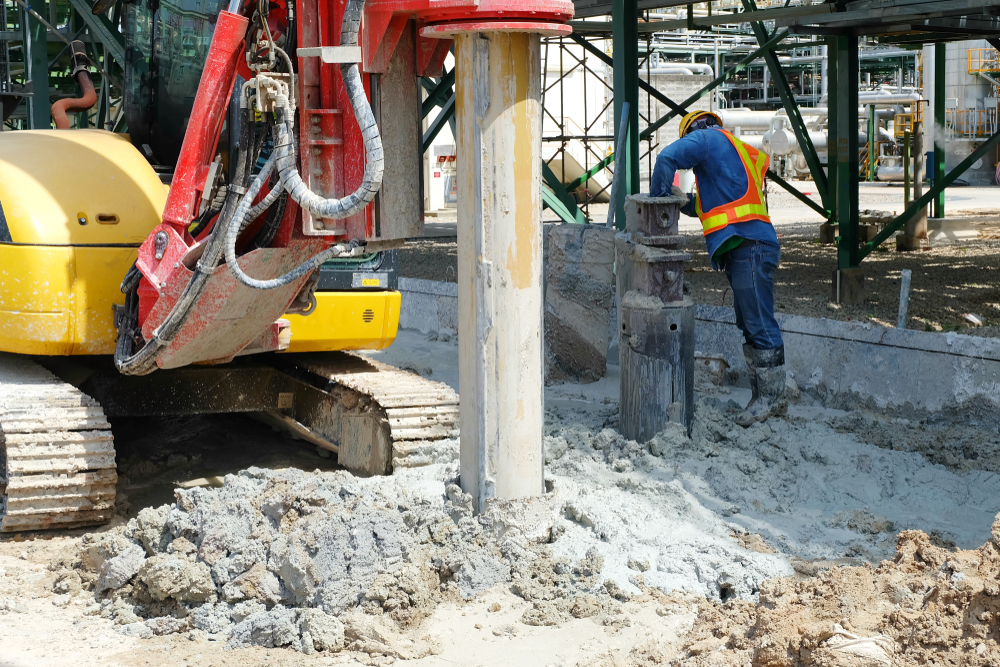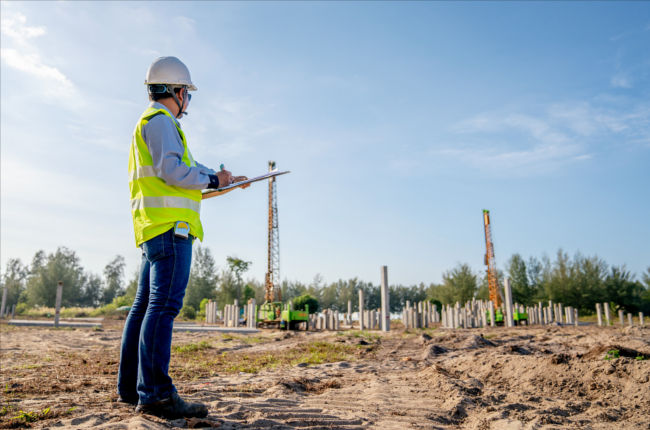The Interdisciplinary Approaches in the Geotechnical Market: Connecting the Gap Between Design, Geology, and Environmental Science for Ideal Project End Results
The combination of engineering, geology, and environmental scientific research within the geotechnical market is not merely useful; it is critical for achieving ideal project results. This interdisciplinary collaboration fosters a detailed understanding of complex site problems, allowing for innovative solutions to arise. By examining essential roles and effective study, we can reveal the dynamic interplay that drives project success. However, obstacles stay in successfully taking care of these multidisciplinary efforts, questioning regarding possible improvements and future fads. What approaches might emerge to facilitate this important cooperation and improve the effectiveness of geotechnical techniques?
Significance of Interdisciplinary Partnership
The relevance of interdisciplinary partnership in the geotechnical industry can not be overemphasized. Reliable geotechnical jobs require the assimilation of diverse proficiency from different fields, consisting of engineering, geology, and environmental science. This cooperation makes certain that all elements of a project are taken into consideration, causing thorough options that attend to complex obstacles.
Interdisciplinary collaboration promotes development by making it possible for experts to share insights and techniques that might not be noticeable when functioning in isolation (tailings engineer). By leveraging the toughness of numerous self-controls, teams can determine prospective dangers, enhance style processes, and enhance the sustainability of geotechnical jobs. Additionally, such partnership promotes a holistic understanding of site-specific conditions, which is critical for accurate analysis and decision-making.
The complexity of geotechnical projects demands a worked with approach to analytic. When engineers, rock hounds, and ecological scientists collaborate, they can create a natural method that lines up technical requirements with ecological considerations and regulatory compliance. This synergy not only improves task end results but additionally adds to the long-lasting strength of infrastructure. Ultimately, interdisciplinary cooperation is important for advancing ideal techniques and achieving excellence in the geotechnical sector.
Key Functions of Each Self-control
Collaboration among different disciplines is not just useful; it is essential for the successful execution of geotechnical projects. Each discipline-- engineering, geology, and environmental science-- plays an unique yet interconnected role that adds to forecast efficiency and sustainability.
Geotechnical engineers are primarily in charge of developing foundations and guaranteeing architectural integrity. They assess soil and rock residential or commercial properties to analyze load-bearing capabilities, supplying vital data for safe building and construction techniques. Their proficiency enables the formulation of innovative options to intricate difficulties.

Environmental researchers evaluate the prospective impacts of building and construction on ecological communities and water sources. They perform ecological evaluations and establish mitigation approaches to minimize unfavorable impacts. By incorporating ecological considerations, they make sure compliance with laws and advertise sustainability throughout the project lifecycle.
Study of Effective Integration
Successful combination of geotechnical self-controls can be exhibited with different case studies that highlight the efficiency of teamwork in addressing complicated design challenges. One significant example is the building and construction of the Hong informative post Kong-- Zhuhai-- Macau Bridge, where a joint strategy including geotechnical engineering, geology, and ecological science was critical. Designers and geologists operated in unison to analyze the seabed conditions and optimize the structure style, making sure security and reducing ecological influence.
Another impactful instance is the enhancement of slope stability in the San Francisco Bay Area, where an interdisciplinary team integrated geotechnical evaluation with environmental evaluations. By incorporating geological studies and hydrological researches, the team effectively determined possible landslide risks and executed reliable mitigation procedures, boosting safety and sustainability.
Moreover, the redevelopment of Brownfield websites often calls for a multidisciplinary method. In one case in Chicago, cooperation among geotechnical engineers, ecological scientists, and city organizers caused the successful remediation of contaminated dirt, enabling for the secure makeover of the site into a community park. These study highlight that interdisciplinary cooperation not only addresses technological difficulties however also fosters innovative options that benefit both communities and tasks.
Difficulties in Multidisciplinary Projects

Additionally, working with timetables and operations amongst different teams can be troublesome, specifically when each self-control has unique job landmarks and deliverables. This imbalance can result in delays and enhanced expenses. The difficulty of resource allotment additionally impends large; making certain that specific know-how is readily available at crucial times requires careful preparation and insight.
Finally, governing compliance positions another significant obstacle. Each discipline might face various regulative structures, and aligning these requirements to fulfill task purposes can be lengthy and intricate. Resolving these difficulties necessitates solid management and effective communication methods to foster collaboration and guarantee that multidisciplinary teams function cohesively in the direction of shared objectives.
Future Trends in Geotechnical Practices
As the geotechnical sector develops, arising trends are improving techniques to resolve the difficulties encountered in multidisciplinary jobs - geotechnical engineers. One significant trend is the boosted integration of innovative innovations, such as synthetic intelligence and artificial intelligence, into geotechnical evaluation and design. These technologies boost anticipating modeling and danger analysis, making it possible for designers to make more educated choices throughout the job lifecycle

Furthermore, the fostering of electronic doubles and real-time monitoring systems is ending up being much more widespread. These devices facilitate ongoing evaluation of dirt conditions and architectural performance, permitting for prompt interventions when issues emerge.
Final Thought
In final thought, the integration of engineering, geology, and environmental science is crucial for attaining ideal outcomes in the geotechnical industry. Effective situation researches highlight the advantages of this strategy, while recognizing the difficulties faced in multidisciplinary jobs.
The assimilation of design, geology, and environmental scientific research within the geotechnical industry is not merely helpful; it is imperative for attaining optimal project outcomes. Efficient geotechnical tasks require the combination of varied expertise from various fields, including design, geology, and environmental science.Browsing look here the intricacies of multidisciplinary projects in the geotechnical sector presents a number of substantial obstacles.As the geotechnical sector evolves, emerging trends are reshaping techniques to deal with the challenges faced in multidisciplinary jobs. Geotechnical engineers are significantly working together with ecological scientists to make sure that tasks straighten with sustainability goals and comply with governing requirements.